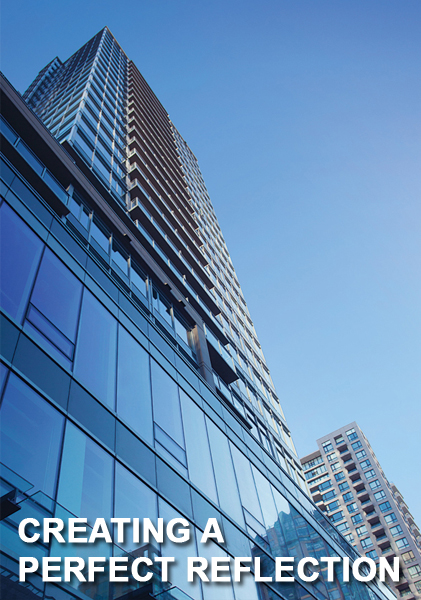HEAT TREATED GLASS
 Heat-treated glass is a general term used in the glass fabrication industry to describe glass that
Heat-treated glass is a general term used in the glass fabrication industry to describe glass that
has been processed through a tempering oven to change its strength and breakage characteristics (i.e., the size and/or shape of the glass pieces after breakage). There are two distinct heat-treated products, heat-strengthened glass and fully tempered glass, as defined in ASTM C1048 Standard Specification for Heat-treated Flat Glass–Kind HS, Kind FT Coated and Uncoated Glass. Compared to annealed glass (non-heat-treated glass), both have increased strength to resist higher levels of impact, mechanical load and theimal stress. Heat-stregnthening adds strength to the glass while limiting the change in its breakage characteristics. Tempered glass is stronger than heat-strengthened glass and significantly reduces the broken piece size to meet the safety glazing standards.
Fully Tempered Glass
Fully tempered glass, normally referred to as just tempered glass, is approximately four times stronger than annealed glass of the same thickness and configuration. When it is broken, tempered glass fractures into small fragments that reduce the probability of serious injury as compared to annealed glass. Tempered glass meets all safety glazing standards. Because tempered glass fractures into many small pieces, it tends to vacate the opening, when broken, more than heat-strengthened and annealed glass does.
Heat-Strengthened Glass
Heat-strengthened glass is approximately twice as strong as annealed glass of similar thickness and configuration. Heat-strengthened glass generally fractures in a manner similar to annealed glass and tends to remain in the opening when broken. It is intended for general glazing where additional strength and/or resistance to mechanical and/or thermal stress are desired. Heat-strengthened glass is NOT a safety-glazing product and therefore should not be used where safety glazing is required.
Heat Treated Glass APPLICATION
Fully Tempered Glass
Tempered glass is used when the strength requirements exceed the capabilities of heat-strengthened glass, and for all safety glazing applications. Tempered glass is commonly used in sliding doors, storm doors, atriums, partitions, windows, storefronts, display cases, bath and shower enclosures and all-glass doors and entrances. Tempered glass should not be installed in areas where it is exposed to temperatures greater than approximately 400°F because it will begin to lose its degree of temper (reverting back to annealed glass).
Heat-Strengthened
Due to its superior glass retention properties, heat-strengthened glass is the preferred heat-treated glass product for applications where additional strength is needed to meet mechanical loads (wind or snow) or thermal loads caused by certain tinted or coated glasses.
Heat-strengthened glass is widely used in laminated glass for additional strength, such as in overhead and sloped glazing. Heat-strengthened glass cannot be used in any safety glazing applications.
Heat Treated Capabilities
Our strongest glass with virtually undetectable distortion.
For optimal performance in terms of wind-load resistance, thermal stress and impact choose from WHTB’s line of heat-treated architectural glass products.
Maximum dimension: 2440 mm x 8100 mm (96"x319")
Minimum dimension: 200 mm x 300 mm (8"x12")
Thickness
Tempered glass : 3 mm - 19 mm (1/8"x3/4")
Heat-strengthened glass : 3 mm -12 mm (1/8"-7/8")
Code Compliance: ASTM C 1048 ANSI Z 97.1 EN12150 BS6206 JIS R 3206 JIS R 3206 JIS R 3222